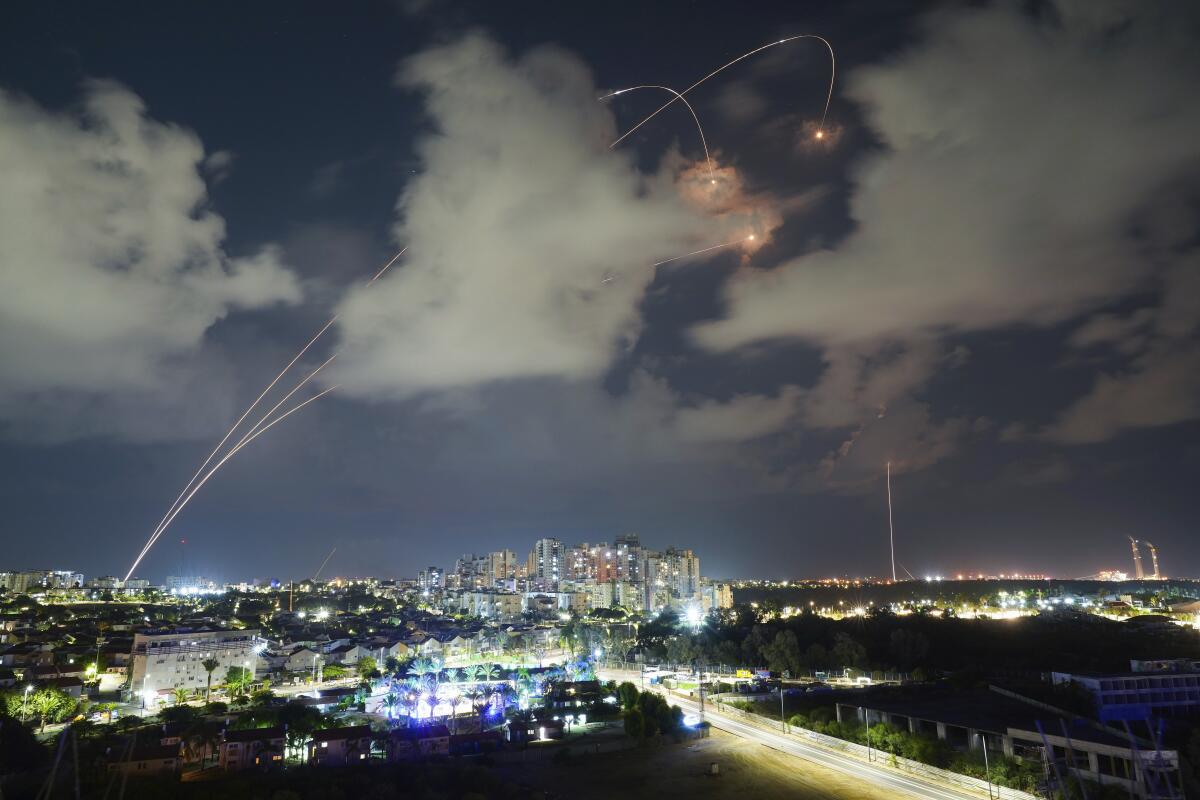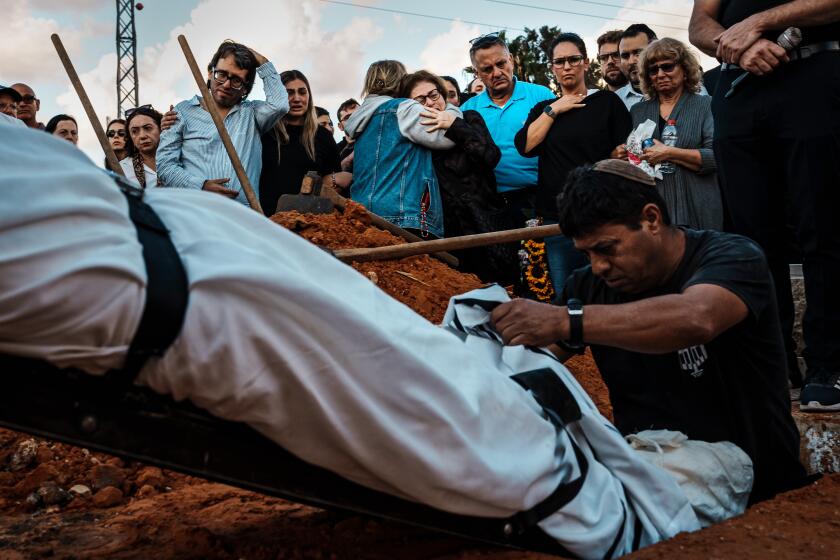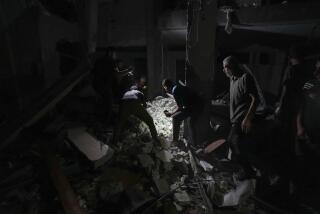Is Israel’s Iron Dome missile defense system ironclad?

JERUSALEM — Since Israel activated the Iron Dome in 2011, the cutting-edge defense system has intercepted thousands of rockets fired from the Gaza Strip.
The system has given residents a sense of security, and Israelis can often be seen watching the projectiles flying through the skies and destroying their targets overhead.
But the current war with Gaza’s militant Hamas group might be its stiffest challenge yet.
In just two weeks, Hamas fired 7,000 rockets toward Israel, according to the Israeli military. That is more than any of the previous four wars fought between Israel and Hamas since the militant group seized power in Gaza in 2007.
On Oct. 7 alone, when Hamas attacked inside Israel, killing more than 1,400 people, most of them civilians, the militant group launched at least 2,000 rockets, according to data from West Point. Israel has since bombarded Gaza with airstrikes, killing more than 6,500, mostly civilians, according to Gaza’s Hamas-run Health Ministry, whose numbers have not been independently verified.
Lebanon’s militant Hezbollah group has also fired hundreds of rockets along Israel’s northern border since the fighting began.
Most of the rockets have been intercepted. But some have managed to get through, killing at least 11 people and hitting buildings as far away as Tel Aviv, according to Israeli officials.
Here is a look at the capabilities — and limitations — of the Iron Dome.
Israel and the Palestinian militant group Hamas appear set to go head-to-head on the ground in Gaza. What’s each side’s endgame?
How does the Iron Dome work?
The Iron Dome is a series of batteries that use radar to detect incoming short-range rockets and intercept them.
Each battery has three or four launchers, 20 missiles and a radar system, according to Raytheon, the U.S. defense giant that co-produces Iron Dome with Israel’s Rafael Advanced Defense Systems.
On Israel’s border with Lebanon, residents are worried that groups like Hezbollah will join a war that eventually spirals into a regionwide conflict.
Once the radar detects a rocket, Iron Dome determines whether the rocket is headed toward a populated area.
If so, it launches a missile to intercept and destroy the rocket. If Iron Dome determines the rocket is headed to an open area or into the sea, it is allowed to land, thus conserving missiles. According to the military, all interceptions occur in Israeli airspace.
The military declined to comment on how many Iron Dome batteries are currently deployed. But as of 2021, Israel had 10 batteries scattered around the country, each able to defend a territory of 60 square miles, according to Raytheon.
Israel-Hamas war: In Israel, a quest to identify unrecognizable bodies. In Gaza, bodies are piled and some stored in ice cream trucks as power fails.
The Iron Dome is part of a larger multilayer air defense system that includes the Arrow, which intercepts long-range ballistic missiles, and David’s Sling, which intercepts medium-range missiles such as those believed to be possessed by Hezbollah in Lebanon.
Both systems, like the Iron Dome, were jointly developed with the United States. Israel is also developing a laser-based system called the Iron Beam that it says will be able to intercept rockets and other short-range threats at a fraction of the cost of the Iron Dome. Israel says that system, developed with U.S. funding, has not yet been deployed.
How accurate is the Iron Dome?
It is roughly 90% effective, according to Rafael.
But it can get overwhelmed if a mass barrage of rockets is fired, allowing some to slip through.
While it has performed well so far, the risk could be raised if Hezbollah enters the war. Hezbollah has an estimated 150,000 rockets and missiles.
As the Jewish Sabbath fell and Muslims marked their principal prayer day, Israelis and Palestinians struggled with the terrifying new reality after the militant group Hamas’ deadly attack on Israel.
How expensive is the system?
Each missile costs an estimated $40,000 to $50,000, according to the Institute for National Security Studies, a Tel Aviv think tank.
The U.S. has invested heavily in the system, helping with development costs and replenishing it during times of fighting.
President Biden has said he will ask Congress for $14.3 billion in military aid for Israel. The majority of that would help with air and missile defense systems, according to the White House.
“We’re surging additional military assistance, including ammunition and interceptors to replenish Iron Dome,” Biden said.
Times staff contributed to this report.
More to Read
Sign up for Essential California
The most important California stories and recommendations in your inbox every morning.
You may occasionally receive promotional content from the Los Angeles Times.














